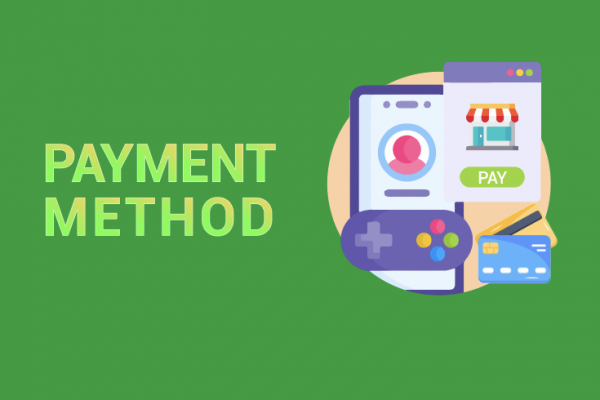One of the best ways to improve customer retention is to effort a seamless checkout experience. While most businesses today offer digital payment options, there’s room for growth when it comes to embedded payments. This payment method became popularized during Covid 19 because of its convenience but it has managed to retain its relevance today.
Digital transformation has now become an integral part of service delivery in every sector. The financial world has been taken by storm by the fintech revolution and there has been a major shift toward digital business. This surge has accelerated businesses to transition towards fintech payment solutions that do away with face-to-face transactions and instead have shifted their sales to online websites and apps, utilizing the concept of embedded payments. This creates an uncomplicated and smooth checkout experience for the customers, thus driving brand loyalty and repeat business.
Digital payments allow customers to experience a faster payment process with a complete range of benefits for the business as well. Embedded payments are a step in the same direction.
In this article, we delve deeper into the concept of embedded payments: what they are, their benefits, and why they matter in businesses of today.
What are Embedded Payments?
Those of us who regularly utilize the services of e-commerce businesses can understand how lengthy and cumbersome their checkout pages can be. Embedded payments allow customers to skip the additional steps of the checkout and instead use a single-click button on the website or app that they can use to pay.
The technology of embedded payments was first pioneered by Amazon, allowing customers to use a “Buy Now” express purchase button. It allowed customers to create an account for browsing that also stored their payment details and shipping addresses. The customers could instantly complete their purchase just by clicking on the payment link. The embedded payment process only required a payment confirmation, skipping the need for entering the shipping and payment details again. This entire process happens within a few seconds and is extremely convenient for the customers.
How Does Embedded Payment Work
Businesses generate online transactions with embedded payments. Instead of having to go to a third-party merchant to make a payment, clients can pay simply by transferring money from their bank to the business using embedded payment systems.
The business’s embedded payment system stores a customer’s payment details when they make their first purchase. By keeping track of this information, the business can provide one-click payment options to its clients, thus fostering lucrative brand loyalty.
The success of embedded payment technology has made it extremely popular with a wide range of businesses utilizing it now, for example, Apple Pay allows customers to make in-app or online purchases using the passcode of their phones. Companies such as Uber and GrubHub are also utilizing the embedded payment technology while many other have also followed suit. This adoption has indicated the prospects of broader growth opportunities in the sector. Larger companies will continue to move towards embedded solutions to facilitate customers.
Embedded Banking
The embedded payment technology can also be utilized for banking services, where online markets, retailers, and non-financial service companies have started bringing the conventional banking service within their customer reward programs, loyalty apps, and websites. The store credit card of a department shop may be connected to its own rewards program. Customers who pay with a credit card are given access to member-only exclusive discounts and a quicker checkout process. This is being practically done by Walgreens, where the myWalgreens rewards app is now connected to a credit card from Walgreens. Consumers may get member-only Walgreens specials, cash rewards, and faster checkouts while still using it just like any other credit card.
Embedded banking and embedded payments are both a subset of the broader category of services referred to as embedded finance. Embedded finance expands on these tactics by providing other services like in-app financing, insurance, and other deals. These services have been playing a significant role in facilitating access to finances to consumers worldwide.
Why do Embedded Payments Matter?
The pandemic caused a significant loss in revenue and customer loyalty for businesses around the world. According to research from Omnicom Media Group, brand loyalty declined from 65% to 49% during the first nine months of 2021. In these times when businesses are attempting to recover from these large losses, embedded payments represent an essential solution for the retention of clients, helping to strengthen customer loyalty and improve revenues.
The simplicity of paying for goods and services without switching between applications or accessing their physical wallets to take out a credit or debit card has become second nature to consumers. Embedded payments enable future transactions to be made with just a tap of a digital wallet or by safely storing payment information. As more customers use digital payments, they might stop carrying a real wallet around just in case; instead, they might expect to be able to pay with their phone or wearable wherever they go. For companies that haven’t upgraded the payment experience, that might mean missed sales and lost clients.
The ever-increasing popularity of embedded payments is primarily due to the fact that the payment process has been incorporated into the entire user experience and is part of the customer’s interaction. By 2030, 74% of digital consumer payments are expected to be made through platforms run by non-financial institutions globally, according to a report by IDC. Another study has found that 47% of SMBs are willing to spend the same, or even a greater amount on embedded finance solutions, rather than those provided by conventional financial institutions.
Embedded Payments: An Essential for your Business
Implementing embedded payment solutions for your business has numerous long-lasting benefits for your business. These include:
Optimizes Operational Efficiency
By accelerating checkout times and lowering human error, embedded payments enable your employees to concentrate on more significant tasks.
Streamlines Processes: Payment transactions are more streamlined and have a smoother flow as no third-party is involved.
Enhanced Customer Experience
Consumers greatly appreciate quicker checkouts during payment which in turn leads to increased customer retention and loyalty.
Helps Form a Deeper Understanding
Integrated payments do away with the requirement to aggregate data and reports from various systems. Owners of businesses can view their performance and customer purchasing behaviours across different departments and locations.
Greater Control on Transaction Costs
Third-party payment processors are not required with embedded payments so there is more control over transaction costs. Businesses can lower transaction fees and better control their payment processing expenses by processing payments in-house.
Improved Safety
Embedded payments provide enhanced security providing protection against fraud and data breaches. The chances of sensitive data being intercepted are greatly reduced due to the use secure APIs for communicating payment data.
Better Marketing
Marketing campaigns that are specifically targeted towards a particular clientele can help businesses stand out from the competition rather than relying on generic, ineffectual mass marketing initiatives.
Implementing Embedded Payment Solutions for your Business
The implementation of embedded payment solutions for your business requires consideration and deliberation, with several factors kept in mind:
Cost and Benefit Analysis – It is necessary to weigh the pros and cons of the new payment system. To do this, businesses must determine the extent to which these systems will enhance business operations and consumer experiences.
Consistency – If a business already employs an online merchant service, it should evaluate if adopting embedded payments will be a better and more affordable alternative.
Gathering Information – A business should assess the kind of data it wants to get from customers and the marketing strategy it will utilize with an embedded payment system.
Conclusion – How Oceanpayment Can Help
Streamlining the payments process for your customers can prove to be of immense benefit to your business as complications regarding integration and onboarding can be eliminated and a single platform for managing payments across channels and geographies can be utilized.
However, this will require you to choose a solid payment provider. Oceanpayment is a global payment service provider that offers secure, easy, professional, and simple payment solutions to merchants that have cross-border businesses. Oceanpayment has been consistently processing transactions for several hundred thousand merchants across 200 countries, providing support to businesses of all sizes to maximize opportunities and enhance revenue growth. Oceanpayment has more than 500 payment methods in one platform and allows merchants to accept a variety of payment types anywhere in the world.
Oceanpayment offers across-the-board support with customized solutions for your business. We’re focused on simplifying digital payments by providing support across different key modules in the eCommerce space. The Oceanpayment payment suite removes friction and facilitates a smooth digital experience.














Comments are closed.